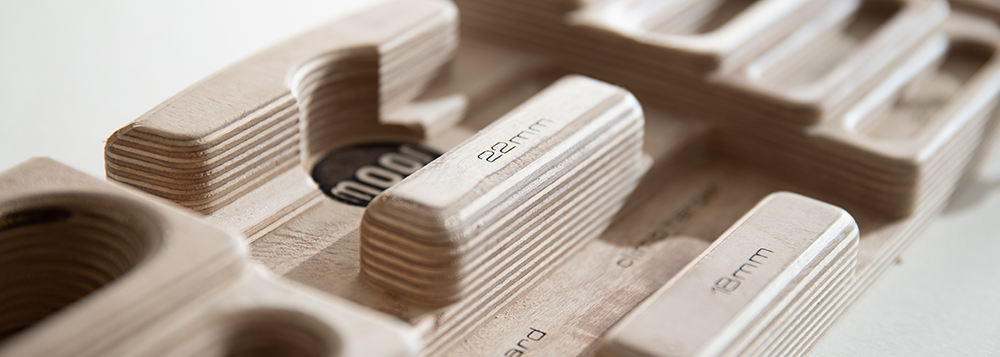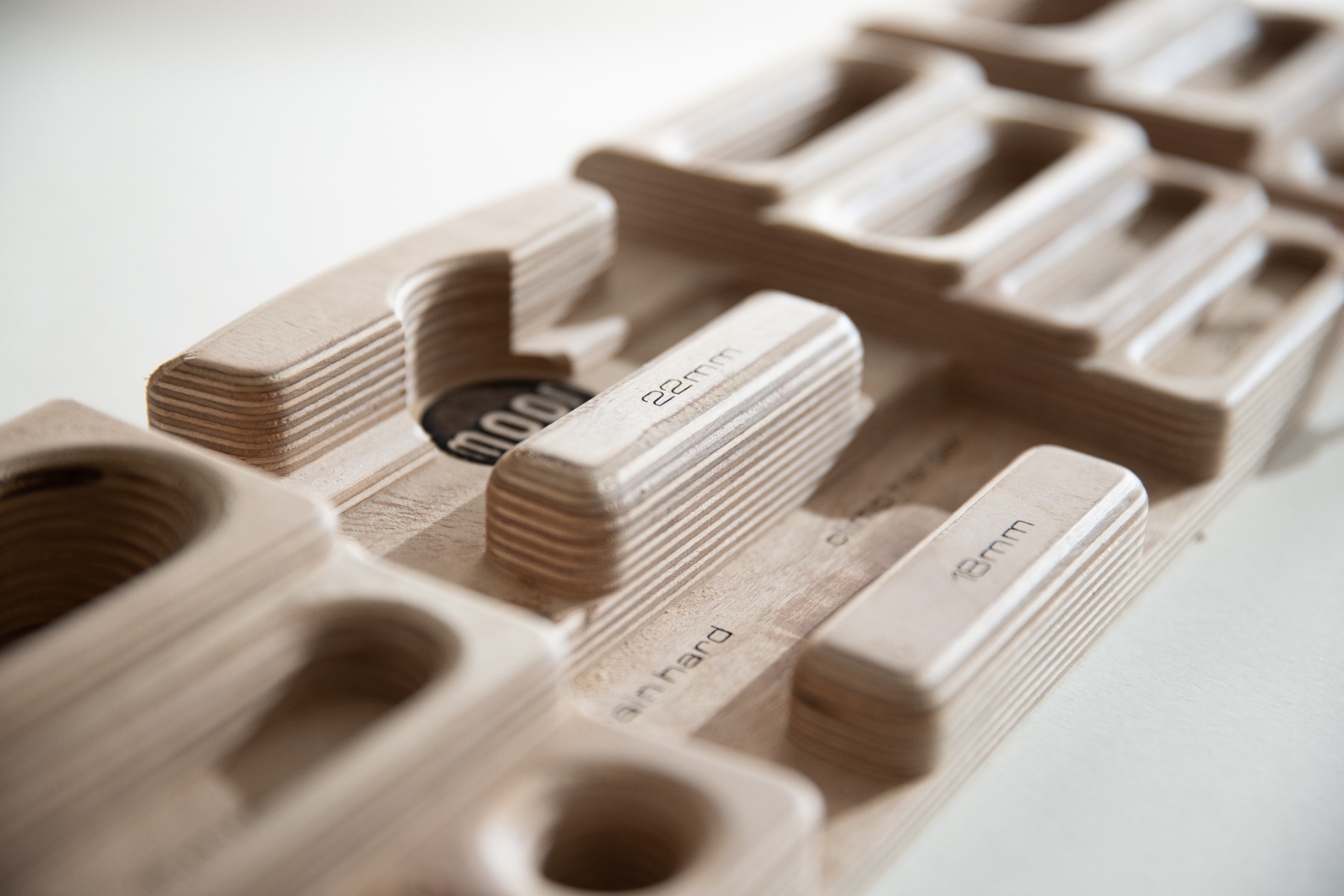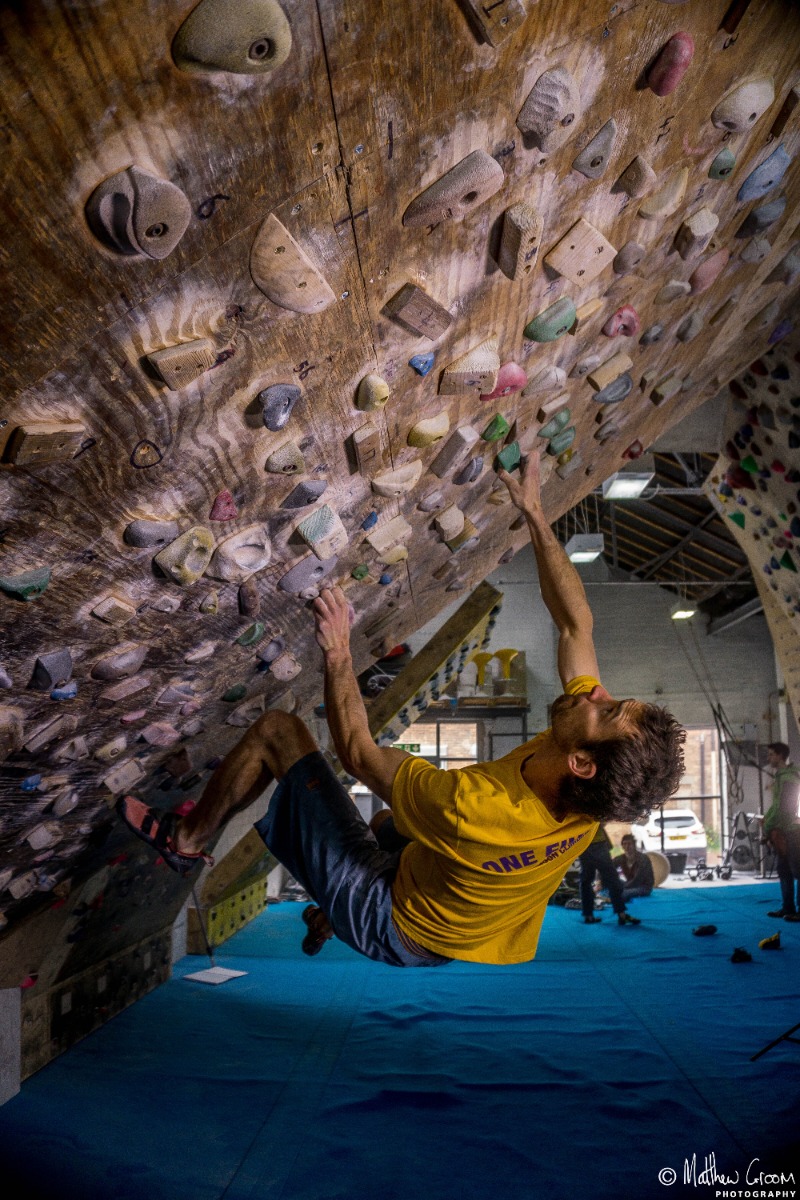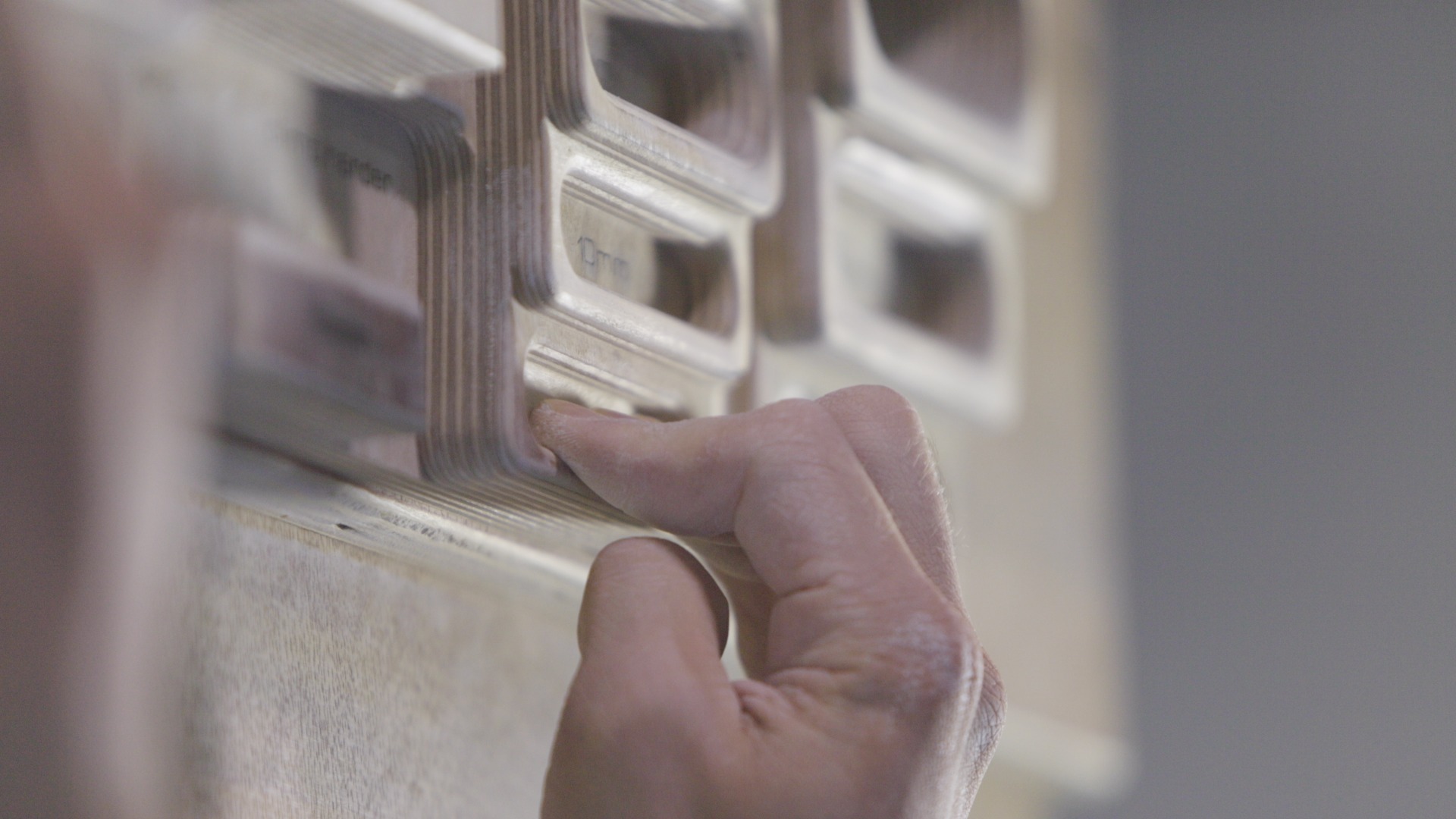
|
My first fingerboard was a Metolius Simulator; a big, heavy hunk of resin above my bedroom door. Actually, looking back, it wasn’t too bad. The edges had a reasonable radius, making them comfortable on the skin, and the jugs were comfy for warming up and pull-ups. My second was a Bleaustone board that hung on a beam above my bed at University; more thought had gone into the carving of this. Holds had different amounts of in-cut to force certain grip positions and there was a greater variety of holds but it was still a big, heavy hunk of resin. |
|
|
After university, I moved into a house with Ned Feehally and Dan Varian (two-thirds of what was to become Beastmaker). We spent a lot of time in the cellar of that house dangling off pieces of wood; trialing new timings and grips to make us stronger and fitter. Over those years the prototypes of the Beastmaker 2000 were developed and tweaked until what you see today was produced. I remember Ned saying that he expected them to get a few years of making fingerboards before they had to get a “proper job”. It’s amazing to see the growth of climbing, training for climbing and therefore the demand for fingerboards since then. Beastmaker is doing better than ever and I’d say the 1000 and 2000 models have become an iconic design with many brands copying or using them as inspiration for their own designs. Fingerboarding is a funny thing; do we really need all the different edge depths and split-finger holds? Or would a single rung of 18-25mm hardwood suffice? Who knows, and it doesn’t really matter. There’s an appetite out there for mono’s, micro’s and all the rest so I’d say the fingerboard is here to stay. |
|
Fast forward a lot of years spent in dark and dingy cellars and Ben asked me to help develop a new fingerboard for the Moon Climbing range of training products. I was excited to try and do something slightly different, if that’s possible! It was decided that the main objective was to provide a board that had enough on it that extras weren’t necessary, so if the only space you had was above a bedroom door or a beam above a bed at university then this was the board for you. |
|
"In my opinion, that's what was missing from the fingerboard market; a board that did it all, from mono’s to micro edges, jugs to one arm holds. With that as the design objective, it was time to get down to the nitty gritty."And so began the creation of what would become the Armstrong fingerboard. Richard Osbourne would make a prototype then I would put it up in the cellar and give him feedback in as much detail as possible. This went on for around a year. It was during the Covid pandemic and so a lot of time was spent in the cellar, training for when we were able to climb on rock again! Finally, we were happy with the product and sent a few out to others to test and give their feedback. After this we made a few last tweaks and the final version was born. Sounds easy but a lot of time was taken fine tuning and making sure everything was as good as it could be. |
|
|
Key features that I had in mind for the board were:
We’re really satisfied with the final product and we hope you enjoy it too! |
 |




